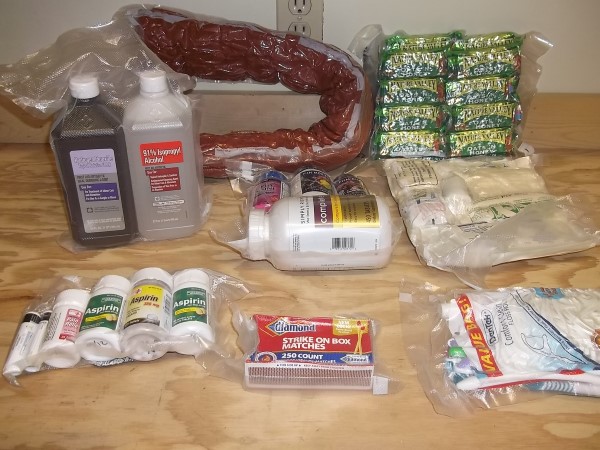I’ve been thinking about my foodsaver again lately. After the post on Foodsaver Successes, Failures, and Tips I figured I would point out many of the positive ways you can and should use a foodsaver for preparedness. While I own the FoodSaver V2244 Vacuum Sealing System (which is a budget model) I’d say it’s served me well over the years for my purposes. Obviously, if you intend to use your foodsaver on a daily basis and for the intended purpose–to seal leftovers–then you may well want to purchase a better model such as this one.
Beyond the foodsaver itself you’re going to need a few items, including:
- FoodSaver 11″ Roll, 3pk – The 11″ wide rolls are more useful than the 8″ rolls.
- FoodSaver 8″ & 11″ Rolls, Multi-Pack – If you prefer a variety pack of rolls.
- FoodSaver Wide-Mouth Jar Sealer – I tend to use wide-mouth jars the most but if you use typical mason jars then you’re going to way the Regular-Mouth Jar Sealer.
All-in-all the investment isn’t much considering how useful they are.
With the above in mind, here’s some of the many ways you can and should use a foodsaver to further your preps beyond just sealing leftovers:
- Extend longevity of Rx and OTC medications, antibiotics, vitamins, etc (basically anything already stored in pill bottles)
- Seal out moisture from UCO Stormproof Matches and fire starting supplies for your bug out bag or vehicle kits (these items tend to go bad over time due to moisture alone)
- Prolong shelf life of foods for your bug out bag–e.g., hard candies, granola bars, etc–or at home (note: not needed for pre-packaged freeze-dried foods)
- Prolong longevity of dehydrated foods in mason jars (they can often last years if dehydrated and stored properly in mason jars)
- Seal clothing and other personal protective gear from moisture and even to compress them for addition to a bug out bag (depending on what you’re trying to seal you can fit quite a bit in a very small space)
- Seal medical supplies–e.g., gauze, bandages, sports wraps, etc–from moisture (anything that moisture would affect)
- Help prevent leakage from anything that contains liquids such as water bottles, isopropyl alcohol, hydrogen peroxide, etc (I’ve actually had a bottle of isopropyl alcohol leak and ruin some preps that was NOT sealed)
- Ensure ammunition is moisture free when needed (that’s about the only problem you can run into)
- Contain items that may melt in extreme heat such as candles or petroleum jelly (if not properly contained in a jar but as part of a makeshift fire starter, for example)
- Prevent alkaline battery leakage onto other gear should something bad happen or even due to exposure to extreme heat
- Contain small/similar items that could easily be lost or separated–e.g., small needles, safety pins, etc–if they’re not contained in something else
- Store toiletries to prevent moisture contamination
- Preserve important documents, photos, identification, etc (realize that if information needs to be updated regularly then this could be a pain to reseal each time)
- Save a tasty treat for later, especially if you tricked your kids on Halloween (this is perhaps the BEST reason to use a foodsaver!)
- Make small pouches of dry food or trail mix, for example, for bug out or hiking use, similar to meals in a jar but “virtually” indestructible
- Save “unexpected” items in bulk such as seasonings, hot chocolate, seeds (anything sealed in a mason jar should be nearly impervious to both oxygen and moisture intrusion)
- Make meals in a jar from an assortment of freeze dried foods (this is a great idea but will require a significant investment in foods before becoming feasible)
I’d imagine there’s quite a number of additional ways you can mix and match foodsaver rolls, bags, and mason jars to further your preparedness. What say you?

Leave a Reply